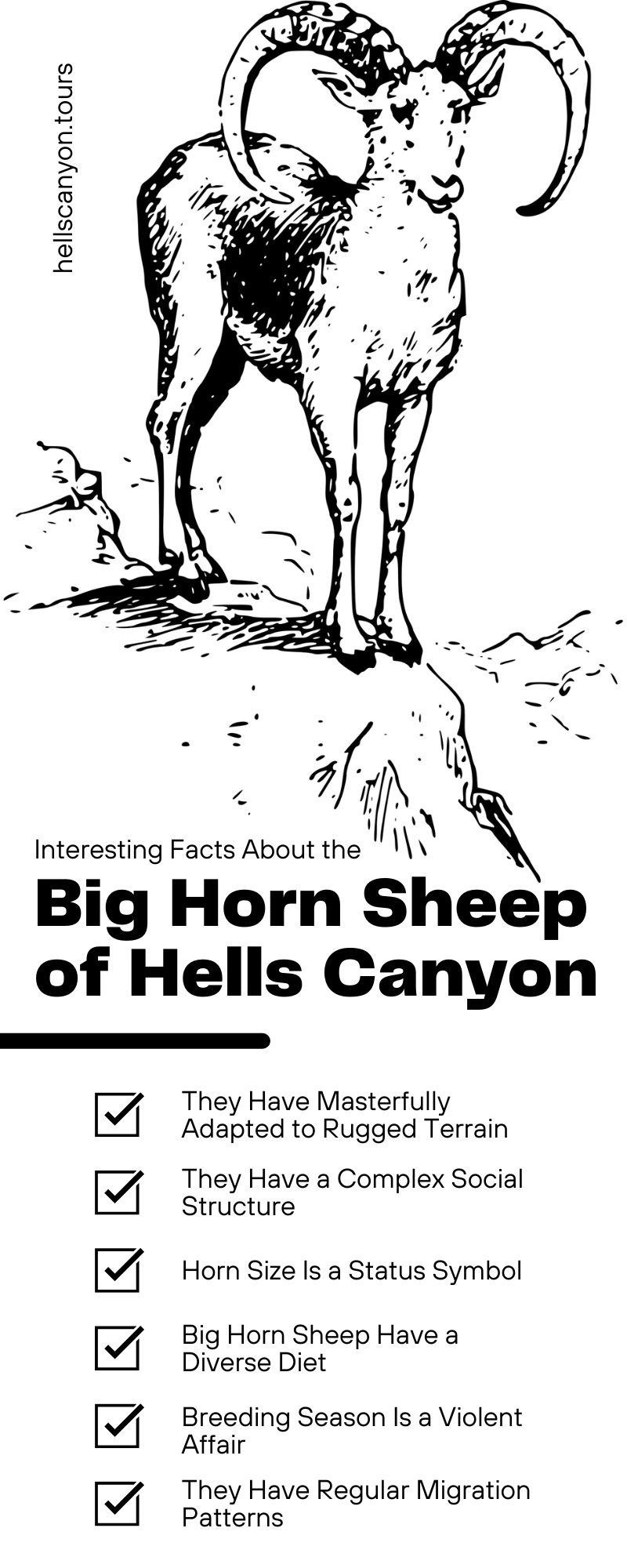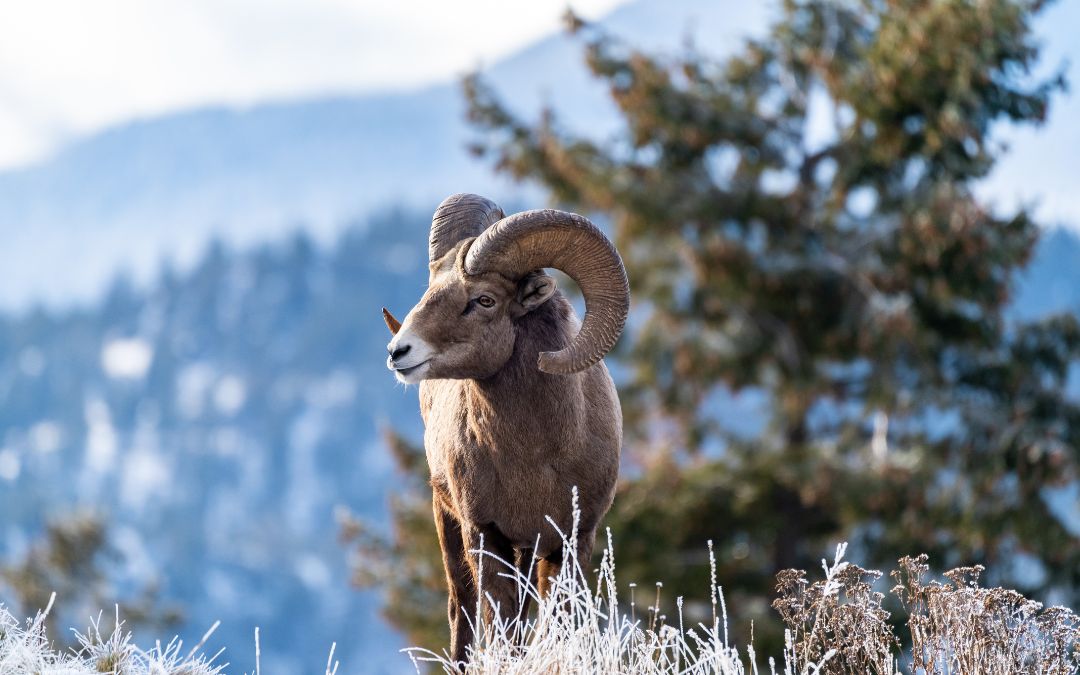Nestled within the rugged terrain of Hells Canyon in Idaho is a gem of the wild, a species resilient and teeming with intrigue—the remarkable big horn sheep. The narrative of these iconic creatures in their natural habitat is both enthralling and vital to increasing our understanding of the delicate balance of our ecosystems. Here, we explore some interesting facts about the big horn sheep of Hells Canyon that shed light on their life and legacy, from their physical prowess to their pivotal ecological roles.
They Have Masterfully Adapted to Rugged Terrain
Hells Canyon, with its sheer cliffs and winding river, is no place for the unprepared. Yet, the big horn sheep call this steep, rocky terrain home. The anatomy of these animals offers a lesson in precision engineering for survival.
Their cloven hooves, uniquely suited to cling to the most hostile of rock faces, provide them with precision and balance. Their keen eyesight is a necessity in the perilous environment from predators like mountain lions and golden eagles. Their vision is almost human-like, enabling them to spot danger from miles away. They also have an exceptional jump, spanning distances greater than 20 feet and as high as 6 feet, to propel themselves effectively up steep rocks.
They Have a Complex Social Structure
Big horn sheep aren’t solitary creatures; they thrive within a structured social order. They typically separate themselves into herds based on sex outside of the breeding season; the most experienced females, or ewes, lead each herd.
Rams, male big horn sheep, establish dominance by posturing and combating during their rut, a time when they vie for the attention of females. The familial unit is strong, with mothers and their lambs forming particularly close bonds. These social ties facilitate learning, sharing of grazing spots, and protection.
Horn Size Is a Status Symbol
A big horn sheep’s horns are the manifestation of male might and status. The curvature and size of their horns serve as indicators of age and successful breeding. It’s important to note that in the treacherous world of Hells Canyon, proper horns are the armor and weapon of the big horn sheep.
However, they do also come with a downside. Because of their size and awkwardness, it’s particularly challenging for them to evade predators and negotiate tight spaces—making males with especially large horns a rarity and a true sign of their survival prowess and strength.
Big Horn Sheep Have a Diverse Diet
We don’t usually associate a diverse palate with those who dwell in craggy landscapes, yet big horn sheep exhibit a remarkable variety in what they eat. Their nimble hooves and sturdy legs enable them to traverse vertical cliffs, where they find a buffet of vegetation. They dine on grasses, sedges, lichens, and forbs, showing an adaptable ingestion strategy as the seasons and topography change. So, regardless of where they are in Hells Canyon or the year, there’s always something for them to dine on.
Breeding Season Is a Violent Affair
The breeding season or “rut” in late autumn is a pivotal time for big horn sheep. Dominant rams engage in aggressive battles, the victors gaining mating rights with the ewes. You might get lucky and witness a duel live if you’re traveling to the canyon during this time. It’s definitely a sight to behold and will be something to remember.
Mating results in the birth of a single lamb come spring. The mother hides her offspring in difficult-to-access locations while she forages, returning several times a day to nurse. This protective strategy is essential in population maintenance within their unforgiving environment.
They Have Regular Migration Patterns
Another interesting fact about the big horn sheep of Hells Canyon is that they migrate according to the seasons. While they can’t fly south like most bird species, they can move to more accommodating areas of the canyon.
Their metabolism shifts with the change in seasons, becoming more efficient to conserve energy. In winter, they migrate to lower, milder elevations where foraging is more abundant. Their reproductive strategies adjust according to resource availability, with shorter gestation periods and births timed with the seasonal flush of suitable food sources.
Big Horn Sheep Impact the Overall Ecosystem
The big horn sheep aren’t mere spectators in the grand play of the ecosystem; they’re critical players. Their grazing patterns influence the flora of Hells Canyon, shaping the environment dynamically.
Furthermore, they are vital in seed dispersal, as they carry plant seeds great distances in their hooves and the wool of their coats. This interaction has far-reaching implications, contributing to the health and diversity of the region’s flora.
They’re Relatively Comfortable With Humans
Interactions with humans have been a double-edged sword for the big horn sheep of Hells Canyon. They’re attracted to the salt licks often found along roads and near human settlements, bringing them into conflict with traffic and putting them at risk. Because of this, locals dedicate themselves to conversing and protecting this species. It is a complex relationship with developments in the region that have both threatened and benefited their populations.
Conservation Projects are Having an Impact
Conservation efforts in Hells Canyon have recognized the intrinsic value of the big horn sheep. The establishment of protected areas, monitoring programs, and public education has been instrumental in safeguarding their numbers and habitats. These efforts ensure that the legacy of the big horn sheep stretches into the future with resilience and strength.
We Can Expect To See Big Horn Sheep in the Future
The future for the big horn sheep in Hells Canyon is one of monitored hope. Conservation plans, coupled with public awareness and involvement, paint a picture of coexistence and sustainability. However, challenges such as disease, loss of habitat, and climate change persist. The path forward is one of mindful balance, where the needs of the ecosystem are in harmony with the burgeoning needs of human society.
Big horn sheep are a gift to the Hells Canyon area, and catching a glimpse of them is a real treat for the entire family. As we discussed, these animals bring a lot of good to the canyon, and they’re an incredibly interesting species to ask about while on our Hells Canyon Idaho jet boat tours. At River Adventures, we pride ourselves on offering a fun joyride through the canyon’s fast rivers and educational excursions. We want you to know exactly what makes this region so beautiful and diverse, from the animals that call it home to the interesting flora that populate the area.


Recent Comments